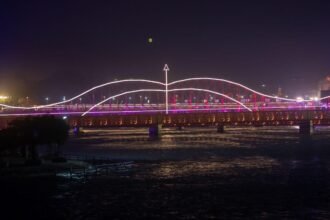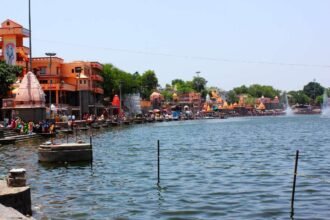The Kumbh Mela is one of the most photographed religious events in the world, yet no two images ever look the same. From the thunderous arrival of Naga sadhus to the quiet devotion of a lone pilgrim at dawn, Kumbh Mela 2027 in Nashik will offer a never-ending canvas of raw emotion, vibrant culture, and spiritual beauty.
But photographing such a sacred gathering requires more than a good camera—it calls for cultural sensitivity, thoughtful framing, and deep respect for the subject.
Here are the most essential photography tips for capturing Kumbh Mela 2027, so your images reflect both the divinity and dignity of this once-in-a-lifetime event.
1. Understand Before You Shoot
Before pressing the shutter, understand why you’re photographing Kumbh Mela:
- Are you telling a story about devotion, culture, or scale?
- Are you documenting an unseen moment of faith or sharing it with the world?
- Are you prepared to be patient, respectful, and spiritually aligned?
Your intention will shape your vision and the quality of your work.
2. Know the Golden Hours of the Mela
The best light—and the most powerful moments—often occur:
- Just before sunrise: Pilgrims heading to the ghats, soft river mist, lamps flickering
- During Shahi Snan (royal bath): Processions of Akharas, vibrant energy, motion
- Blue hour after sunset: Ghats lit with diyas, aartis by the river, tranquil moments
Schedule your day around these golden hours to capture depth and atmosphere.
3. Use the Right Gear
Your gear should suit your style and be minimal and mobile.
Recommended equipment:
- DSLR or mirrorless camera with 24-70mm or 70-200mm lenses
- A fast prime lens (35mm or 50mm) for low light and portraits
- Weatherproof backpack with spare batteries and memory cards
- Tripod (only where permitted) for night and long exposure shots
- Smartphone with Gimbal or wide-angle lens for discreet moments
Avoid bulky setups that may disturb people or draw unwanted attention.
4. Shoot Stories, Not Just Scenes
Instead of trying to shoot everything, follow a theme or story arc:
- A day in the life of a Naga sadhu
- The quiet ritual of a widow performing her first holy dip
- Children helping elders during Snan
- Behind-the-scenes of tent cities or food distribution
- A visual diary of spiritual transformation
These stories will stand out more than random crowd shots.
5. Respect and Consent Come First
Kumbh Mela is a sacred space. Many people are in prayer, mourning, or deep contemplation.
Always follow these basic photography ethics:
- Ask permission before photographing individuals
- Don’t interrupt rituals or block access to sacred areas
- Avoid zooming in on semi-nude sadhus or bathing women
- Don’t treat people as “exotic objects”
- Thank them after a portrait and offer to share the image
If in doubt, put the camera down—the moment is more important than the shot.
6. Blend In With the Crowd
Photographers get the best images when they become invisible.
Tips:
- Dress modestly and avoid flashy gear or logos
- Move slowly, quietly, and observe more than you shoot
- Stay alert and ready—moments appear and vanish in seconds
- Build rapport with akharas or groups for closer access
- Stay hydrated and carry basic supplies for long hours on foot
The best photojournalism often comes from quiet persistence, not force.
7. Play With Composition and Contrast
Kumbh offers natural layers and contrast—use them to your advantage:
- Rule of thirds for framing subjects near the ghats
- Leading lines from processions, tents, or river paths
- Contrast between sadhus and modern pilgrims
- Reflections in water, mirrors, or temple glass
- Use color symbolism: saffron, ash, red tilak, white dhotis
Let each frame evoke a feeling, not just a fact.
8. Store, Edit, and Share With Intention
After the shoot:
- Backup images to multiple devices
- Use light editing to enhance, not distort, the scene
- Avoid over-saturating spiritual tones for “likes”
- Write thoughtful captions if sharing on social media
- Tag responsibly and share with your subjects, if possible
Consider contributing to photo essays, exhibitions, or cultural archives.
Also read : Cultural Significance of Akharas at the Next Kumbh Mela?
9. Know Where Not to Shoot
Avoid photography at:
- Private bathing ghats (especially during women’s slots)
- Inside temples unless signage permits
- During confidential akhara meetings
- At medical aid or emergency sites
- In moments where grief or pain is visible
Honor silence as much as spectacle.
In Conclusion
Photographing the Kumbh Mela 2027 in Nashik is not just about capturing light and motion—it’s about preserving the sacred through your lens.
Approach the Mela not just as a photographer, but as a pilgrim with a purpose. Let your images reveal the divine dance of devotion, culture, humility, and human spirit.
In doing so, your camera becomes not just a tool—but a witness to the soul of India.





